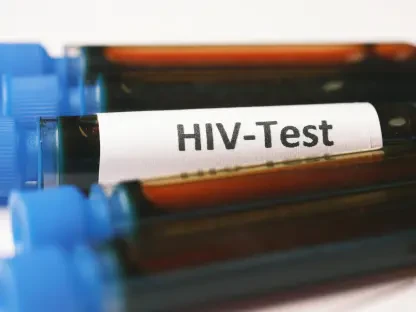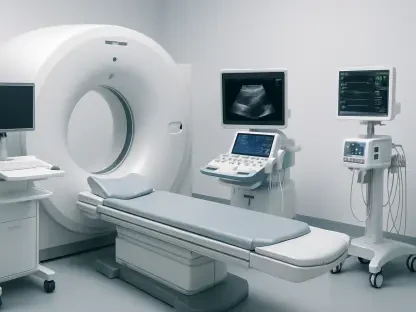James Maitland is a distinguished expert in the intersection of robotics, IoT applications, and medicine. Driven by a profound dedication to harnessing technology for healthcare advancement, he is well-placed to offer insights into recent significant legal and healthcare developments, like the Supreme Court’s decision on the Affordable Care Act.
Can you explain the significance of the Supreme Court’s decision to uphold the Affordable Care Act’s preventive services mandate?
The Supreme Court’s decision is crucial because it ensures that a broad range of preventive healthcare services remains accessible without cost-sharing by Americans. This decision supports the objective of early disease detection and preventive measures, which are key to reducing long-term healthcare costs and improving overall public health outcomes.
What are the main preventive healthcare services covered under this mandate?
The mandate includes essential services such as cancer screenings, tests for chronic conditions like diabetes, and services related to sexual health and pregnancy. These services are critical, allowing healthcare providers to address potential health issues before they develop into more severe conditions.
How does this ruling impact public health and healthcare providers?
This ruling significantly benefits both public health and healthcare providers by maintaining uninterrupted access to necessary preventive services. It also relieves providers from the administrative burden of negotiating coverage with insurers for services that are vital for patient care but may not directly generate income.
What was the primary argument brought forth by Braidwood Management in the Kennedy v. Braidwood Management, Inc. case?
Braidwood Management argued that the U.S. Preventive Services Task Force members violated the Constitution because they weren’t appointed by the president or confirmed by the Senate, which they claimed was necessary under the Constitution’s Appointments Clause.
Why did the plaintiffs believe the U.S. Preventive Services Task Force violated the Constitution?
The plaintiffs’ belief stemmed from their interpretation that task force members were principal officers who should be appointed in a manner prescribed by the Appointments Clause, which requires presidential appointment and Senate confirmation, whereas task force members were appointed by the HHS Secretary.
What reasoning did the Supreme Court provide for classifying task force members as inferior officers?
The court reasoned that since task force members are appointed by the HHS Secretary and are under his supervision, they qualify as inferior officers. This means their appointment conforms to the Constitution’s requirements, as they are not exercising significant independent authority.
Which justices joined the majority opinion, and who wrote it?
Chief Justice John Roberts, Justices Sonia Sotomayor, Elena Kagan, Ketanji Brown Jackson, Brett Kavanaugh, and Amy Coney Barrett joined the majority opinion. Justice Kavanaugh wrote it.
What were the main points in the majority opinion written by Justice Kavanaugh?
Justice Kavanaugh emphasized the importance of the preventive services provided by the task force and highlighted the chain of supervision from the task force members, through the Secretary of HHS, to the President. This structure was aligned with the Framers’ intentions for political accountability.
Can you provide some background on the legal journey of this case leading up to the Supreme Court?
This case has traveled through various courts since 2020, initially brought by plaintiffs challenging the ACA provisions related to contraceptive coverage. A district court ruling in 2023 sided with the plaintiffs, but the decision was stayed pending appeal. Eventually, the U.S. Court of Appeals for the 5th Circuit issued a mixed ruling, prompting the Biden administration to elevate the case to the Supreme Court.
What was the outcome of the district court’s initial ruling in 2023?
The district court agreed with the plaintiffs, asserting that the ACA’s preventive services provision violated the Appointments Clause. However, the ruling was paused pending the appeal, so it did not immediately affect the ACA provisions.
How did the U.S. Court of Appeals for the 5th Circuit rule on the case, and what was its reasoning?
The 5th Circuit issued a mixed decision, agreeing in part with the district court but primarily questioning its nationwide applicability. It suggested the need for congressional confirmation of task force members, rather than only appointment by the HHS Secretary.
What were the arguments presented by the Biden administration in defense of the mandate?
The Biden administration argued that the HHS Secretary had adequate oversight over the task force, which classified its members as inferior officers. Their attorneys highlighted the erroneous interpretation by the 5th Circuit of the Appointments Clause and defended the mandate’s constitutional foundation.
How did the Trump administration’s stance on this issue differ from previous Republican efforts regarding the Affordable Care Act?
Interestingly, the Trump administration defended the preventive services mandate despite previously opposing the ACA in broader contexts. This defense underscored the recognized value and necessity of maintaining access to preventive healthcare services.
What authority does the HHS secretary have over the U.S. Preventive Services Task Force, according to the Supreme Court?
The Supreme Court acknowledged the HHS Secretary’s authority to appoint, supervise, and, if necessary, remove task force members. This level of oversight ensures that the task force’s work aligns with broader public health objectives and maintains political accountability.
How did Justices Thomas, Alito, and Gorsuch justify their dissenting opinion?
The dissenting justices argued that previous appointment practices didn’t involve sufficient oversight, as historically, a subordinate within HHS appointed members. They felt the government’s new interpretation to justify appointments was unconvincing and problematic.
What is your forecast for the future of preventive healthcare services in light of this ruling?
Going forward, preventive healthcare services under ACA should remain robust and expand, with the ruling reinforcing their importance. We can expect further emphasis on integrating new medical technologies and approaches that enhance early detection and preventive care, aligning with legal frameworks that support these innovations.









